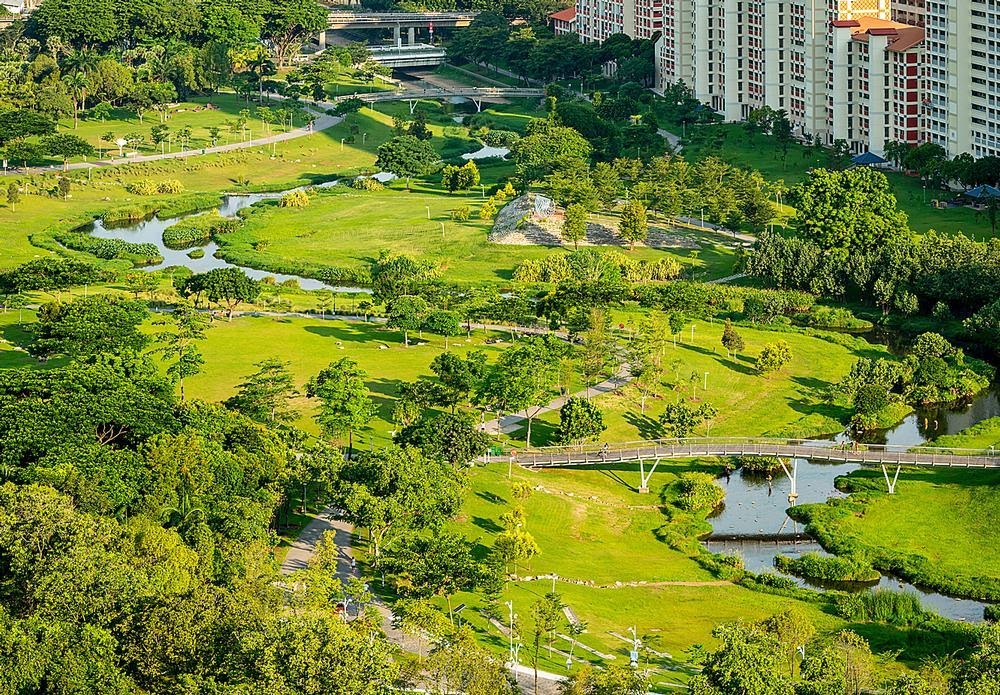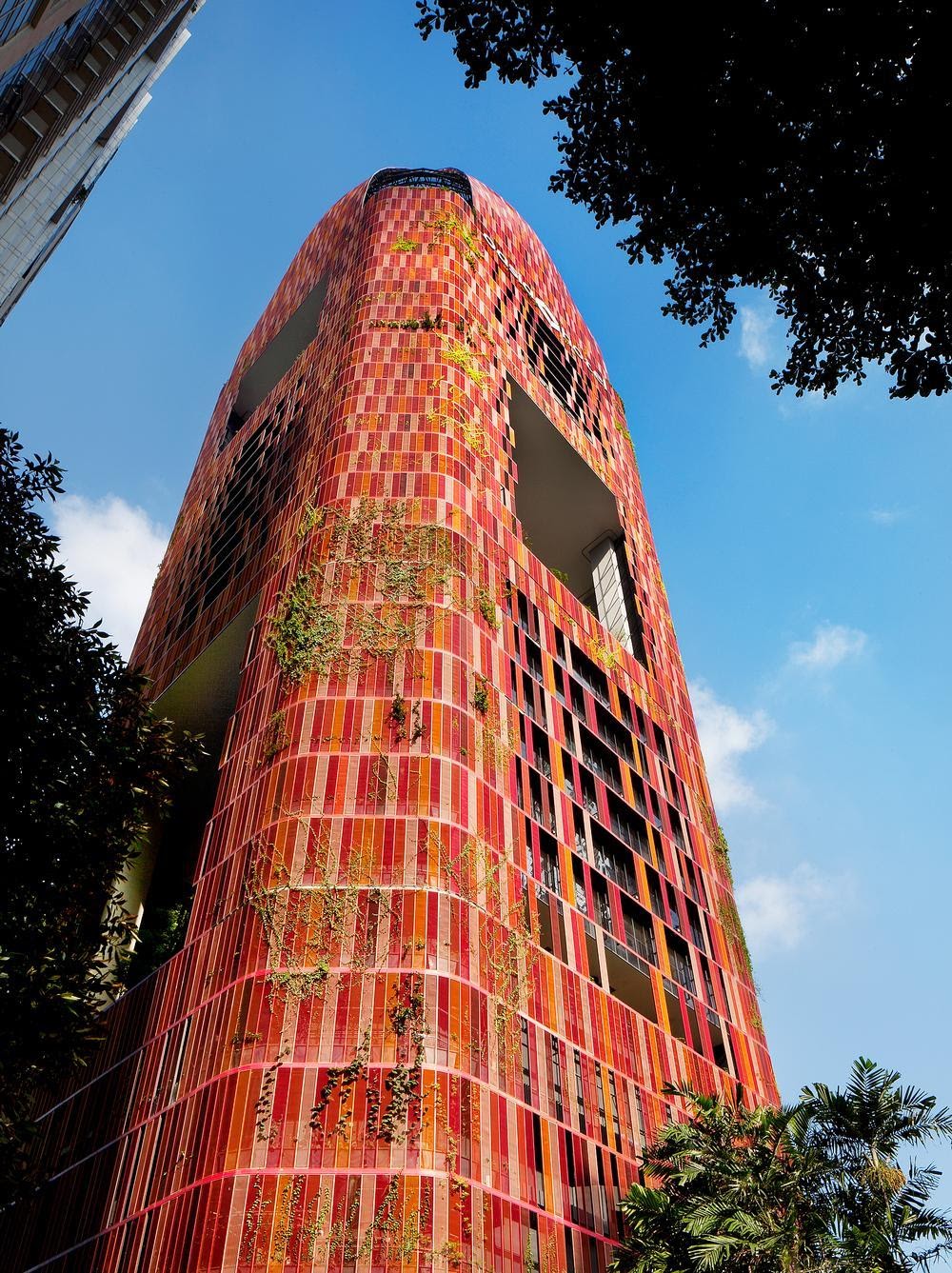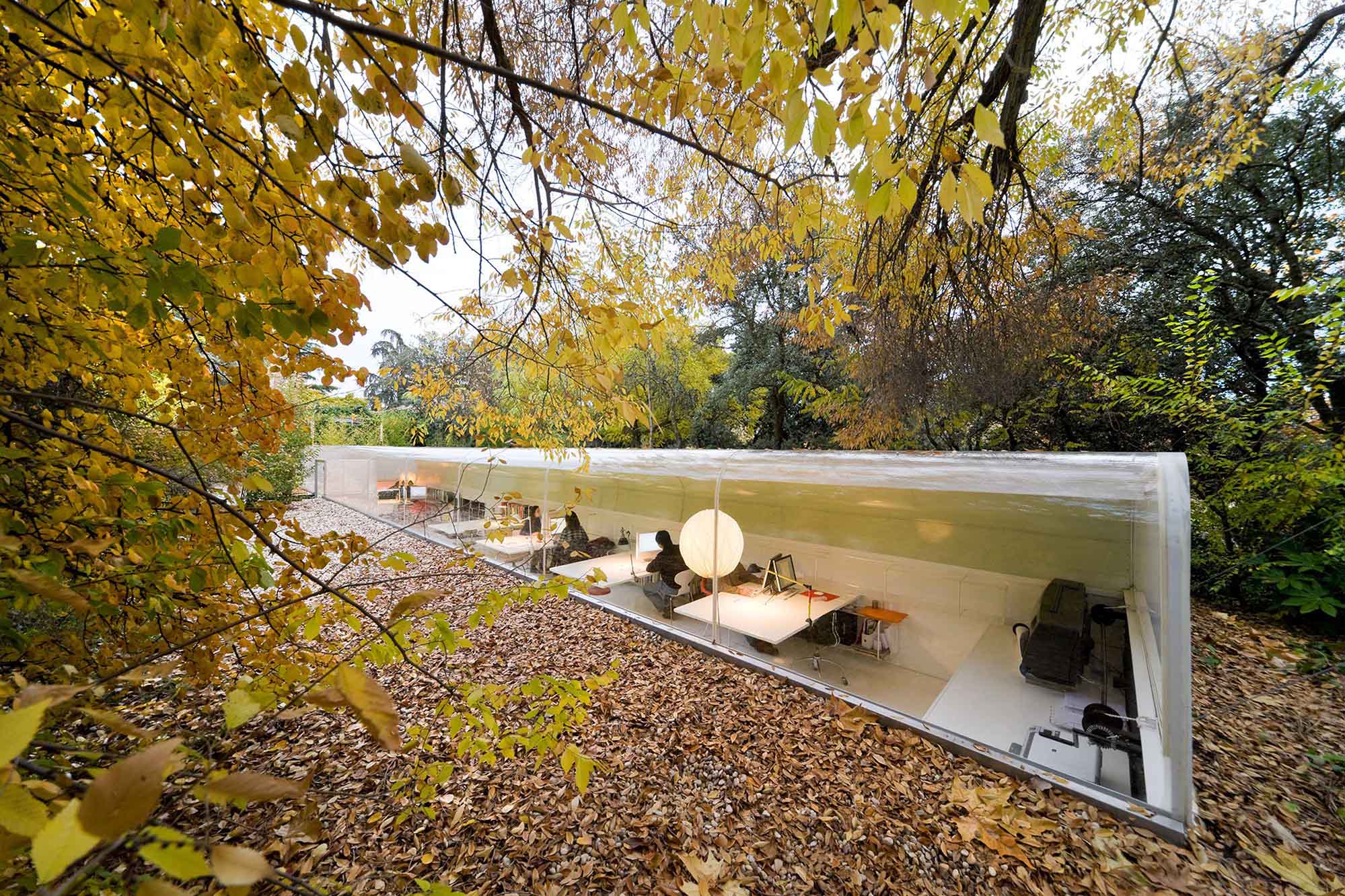Abstract
Biophilic cities try to reconnect people with nature, which is something many urban cities currently lack. Singapore is actively implementing many features of biophilic design in order to bring its residents more in touch with nature, just as it has been doing since it gained independence. Through a variety of different design techniques, engineers and architects are able to design cities and buildings that aim to be as connected with nature as possible. Not only are these green buildings good for the environment, but they also have an impact on people’s health. These buildings and cities help with issues like carbon emissions and also can improve the overall mental and physical health of those residing in these cities or near these buildings. This article aims to explore what exactly a biophilic city is, and then proceeds to discuss the effects of them on the environment and human health.
Introduction
If the term biophilia is unfamiliar to you, then hearing the phrase “biophilic city” may come across as strange and alarming. However, a biophilic city is neither of these things. Biophilic cities, also known as “green cities”, are simply a concept in which a city is designed to incorporate nature as the key aspect [1]. A present day example is Singapore, which was designed specifically to be a biophilic city [4]. One may look at these cities and think their benefits only extend to the environment, simplifying the design process to putting plants on buildings. However, the design process that goes into these cities requires extensive engineering and architectural planning. While biophilic design does help the environment, it also benefits the physical and mental health of the city’s residents [2]. The scope and purpose of biophilic cities goes far beyond putting plants on buildings and making them look pretty.
What is a Biophilic City/Biophilic Design?
The term “biophilia” means “love for our living systems” [5]. This refers to the innate human desire to be close to nature, and how we love and appreciate it. When we talk about biophilia in terms of cities and design, it is referring to bringing this love for nature into the way we design our cities. Biophilic city design can range from projects as small as planting more trees and flowers along city sidewalks to as large as designing skyscrapers with plants growing along the outside and gardens filled with native plants. The ultimate goal of biophilic design is to create spaces in urban areas where people feel connected to nature. In an ideal biophilic city, you would not feel as if you were in an urban area, but rather a more natural setting. Whether it be a large project involving intricate skyscrapers or simply revamping an old park, biophilic design is impactful to the community for reasons ranging from improving the environment to bettering people’s mental health.

Figure 1: The Bishon-Ang Mo Kio Park in Singapore [photo by Rambol Studio Dreiseitl] [4].
The Architecture and Planning Behind a Biophilic City
Planning biophilic design means considering a wide range of aspects. It requires a very holistic approach in order to determine how to incorporate elements of nature into projects at every level, as well as keep the methods of the design sustainable throughout the project [1]
As previously mentioned, biophilic design is not only meant to look sustainable, but also be sustainable. Architects utilize technologies like low flow water systems, strategic angling of windows, and other advanced technologies available to reduce energy use [3]. In order to fully have the biophilic name, it is important to use locally sourced materials when possible in order to reduce the impacts of bringing in non-local materials. This concept is called “vernacular architecture” [3]. Using locally sourced materials helps reduce environmental impact by limiting the travel distance of the materials, therefore decreasing carbon emissions associated with transporting materials (from trucks, trains, etc.). While these design aspects may not show in the visual aspects of these cities, they are just as important, and have just as big of an impact as those more obvious and visual aspects.
A helpful tool in biophilic city planning is GIS (geographic information system) software [1]. This software allows us to analyze a variety of different types of data and draw conclusions from it. An example of utilizing GIS data is gathering an estimate of how many people in a given population can walk to a green space in 10-15 minutes [1]. Once the GIS software gives this data, we can analyze it and draw conclusions like whether there is enough green space in a city or not, and where we can add more green space if certain areas are lacking it. This tool can be essential in the design and planning of various aspects of biophilic cities.
How Biophilic Cities Help The Environment
In addition to making cities look pretty, these various aspects of biophilic design have the potential to help mitigate a variety of environmental issues, such as the urban heat island effect. This phenomena describes how densely populated cities tend to be warmer than their surrounding suburbs and neighborhoods [7]. One of the biophilic methods for mitigating this effect is adding more trees and vegetation to create more shade and cool the air as liquid evaporates off the vegetation [7]. In relation to this, the additional trees and greenery added, as well as increasing the network of urban trails in cities, helps contribute to lowering carbon emissions in cities [1]. This is because the urban trails allow people to walk more places opposed to driving, therefore decreasing pollution from driving. Trees act as carbon sinks in the environment, so they help absorb carbon in the atmosphere. Therefore, the more trees a city has, the more potential there is to reduce the amount of carbon in the air.
Another problem these cities help address is biodiversity. Many cities experience loss of biodiversity as land is developed for buildings. Biophilic design addresses this by incorporating native plants into their design to help bring back these plants to their habitats, as well as helping foster a habitat for other animals and insects to come back to the area [6]. Biophilic design can also help us better understand the natural movements of plants and animals in their natural habitats [1]. This is because as these designs build things like wildlife bridges—a bridge that allows animals to cross over urban barriers like freeways—and add more native plants to the area, we can study how the animals use the bridges and migrate within the cities, and how plants spread and grow in the new habitat [1]. While the ability to bring wildlife back into populated areas is something you may not expect, it is very important and one of the biggest benefits biophilic design can bring to an area.
The Importance of Biophilic Cities on Human Health
Not only do biophilic cities improve our environment, but they also improve human mental and physical health. Issues like obesity and ADHD can be linked to a lack of connection with the environment [2]. While having more greenery in cities is not an instant cure to these health issues, it has the potential to significantly help. Children that go to school in more natural spaces perform better academically [2]. Employees who have workplaces with views of nature and green spaces tend to experience less stress, higher productivity, and more happiness [2]. We spend much of our lives at school and at work, so being able to improve how we work in these places through biophilic design makes it that much more relevant and important to our society.
Being surrounded by nature improves the overall health and development in both children and adults [6]. Research has shown that even a single plant in someone’s living or work space can significantly decrease stress and anxiety [8]. Researchers in Denmark studied groups of people between a certain time period to see if there was any correlation between the greenery in which these people grew up in and their mental health [9]. The study found that children raised in less green neighborhoods were 55% more likely to develop a mental illness than children raised in greener neighborhoods [9]. Another study done in Philadelphia increased the greenery of various neighborhoods to three different levels to see how it affected the mental health of its residents [9]. The study found that those living in the neighborhoods with the most changes were mentally healthier than the neighborhoods that changed less [9]. Those in the most changed neighborhoods reported feelings of depression dropping by 42% and feelings of worthlessness dropping by 51% after the changes to the greenery were made [9]. These studies exemplify the importance of being surrounded by green space in our daily lives in order to maintain good mental health.
Singapore: The Classic Biophilic City
The city of Singapore was planned to be a biophilic city at its origin. When Singapore gained independence in 1965, one of their goals was to be a “Garden City,” meaning they planned on keeping the city clean and green, as well as educate their citizens on how to personally contribute to maintaining a garden city [5]. As of 2012, Singapore has gone as far as changing their slogan from “Garden City” to “a city in a garden” to further emphasize their point of centering the design of the urban space to have nature in mind [5].
One of Singapore’s goals was to make the city’s expansive green spaces as connected as possible. In order to do this, they created an intricate network, called the Park Connector Network, where they connected the city’s green spaces through linear parks [5]. Not only does this make the city more walkable, and therefore lessening the need for residents to drive everywhere, but it also contributes to making the city feel as if it is situated in a garden, rather than the other way around.

Figure 2: The Oasia Hotel in Downtown Singapore [photo by Patrick Bingham-Hall] [4].
An example of Singapore green architecture is the Oasia Hotel Downtown. The building is covered in various flowering plants and has open-air sky gardens throughout [4]. Due to the extent of the biophilic design on the building, it has 750% more green space than the lawn that was previously on the property, proving that even densely populated cities can expand their green space [2]. Not only is this building impressive environmentally, but it is also incredible to look at.
Biophilia in Other Cities
Singapore is not the only city in the world implementing the concepts of biophilic cities. In San Francisco, where open space is limited, they created temporary “pop up parks” in parking spaces when the spaces aren’t necessarily needed [3]. They are utilizing empty space so it can have a purpose, rather than letting it sit idle. In Japan, there is the “Fuji Kindergarten,” where the school itself surrounds a tree, so while in class and during breaks students are constantly connected with nature [2]. There is a structure that surrounds the tree, so children can play around it and further this connection with nature [2]. The Selgas Cano Offices in Madrid, Spain are literally built into the ground, so that employees are quite literally working in nature [2]. Glass windows allow for lots of natural light and views of the surrounding woods [2].

Figure 3: the Selgas Cano Offices [2]
Since more and more cities have begun to integrate biophilic design, an entire network of cities dedicated to this design has emerged. Cities from all over the world have joined this organization. Their website, biophiliccities.org, shows all the different cities that have chosen to dedicate the future planning of their cities to incorporate nature, as well as different articles, films, and other resources to show how these cities are actively implementing biophilic design.
Conclusion
It is easy for us to see how these different examples of biophilic design throughout the world are good for the environment. After closer examination, their benefits to people’s mental health also become apparent. Humans have an innate desire to be connected with nature, and as more and more of the world becomes urbanized, people may lose touch with the natural world, and it is often not a fault of their own, as they may simply live somewhere that lacks natural space. It is important to prioritize incorporating design with nature not only because it helps the environment, but also because it helps people. As biophilic design becomes more and more popular, both people and the environment become happier and healthier.
Works Cited
[1] T. Beatley, “Geodesigning Nature into Cities,” Esri, 2016. [Online]. Available: https://www.esri.com/about/newsroom/arcnews/geodesigning-nature-into-cities/.
[2] W. Hopkins, “Reconnecting People with Nature through Architecture and Design,” Smart Cities Dive. [Online]. Available: https://www.smartcitiesdive.com/ex/sustainablecitiescollective/nature-view-nature-design-reconnecting-people-nature-through-design/1069371/.
[3] “14 Patterns of Biophilic Design,” Terrapin Home – Terrapin B3right Green, 12-Sep-2014. [Online]. Available: https://www.terrapinbrightgreen.com/reports/14-patterns/.
[4] C. DeWolf, “Biophilic design: Greening Singapore,” CLAD. [Online]. Available: https://www.cladglobal.com/architecture-design-features?codeid=30964.
[5] P. Newman, “Biophilic urbanism: a case study on Singapore,” Australian Planner, vol. 51, no. 1, pp. 47–65, 2013.
[6] J. Africa, J. Heerwagen, V. Loftness, and C. R. Balagtas, “Biophilic Design and Climate Change: Performance Parameters for Health,” Frontiers in Built Environment, vol. 5, 2019
[7] “Heat Island Cooling Strategies,” EPA, 06-Sep-2019. [Online]. Available: https://www.epa.gov/heat-islands/heat-island-cooling-strategies.
[8] “How Does Nature Impact Our Wellbeing?,” Taking Charge of Your Health & Wellbeing. [Online]. Available: https://www.takingcharge.csh.umn.edu/how-does-nature-impact-our-wellbeing.
[9] A. Reuben, “The Incredible Link Between Nature and Your Emotions,” Outside Online, 11-Jun-2019. [Online]. Available: https://www.outsideonline.com/2397694/nature-mental-health. [Accessed: 01-Feb-2020].

